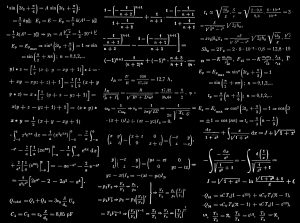How to Use Visualization to Teach Math

Do you remember struggling with math problems as a child? As a parent, you want to ensure that your child doesn’t face the same difficulties. The good news is that there are effective teaching methods that can help. One such method is the use of visualization techniques. By incorporating visualization into math instruction, you can make abstract concepts more tangible and help your child develop a deeper understanding of mathematics.
In this guide, we will explore how to use visualization to teach math effectively. From concrete models to visual representations and real-world connections, we will cover it all. So let’s dive in and discover the power of visualization in unlocking your child’s math potential.
What is Visualization in Math?
Visualization is the process of creating mental images or using physical objects, diagrams, and pictures to represent mathematical concepts. It helps students develop a stronger grasp of abstract ideas by making them more concrete and relatable. By engaging their visual senses, students can better understand and solve math problems.
Concrete Models for Building a Strong Foundation
To start using visualization techniques in math instruction, begin with concrete models. These models can be physical objects like blocks or counters that represent numbers or quantities. For example, when teaching addition and subtraction, have your child use blocks or counters to model the problem. This hands-on approach helps build a solid foundation and makes math more accessible.
Encourage your child to manipulate the objects, physically adding or removing them to represent the mathematical operations. This interactive experience allows them to visualize the problem and understand the underlying concepts better. As they become proficient, they can gradually transition from physical models to mental imagery.
Developing Mental Imagery Skills
Once your child is comfortable with concrete models, it’s time to nurture their mental imagery skills. Mental imagery is the ability to create visual representations in the mind without relying on physical aids. This skill is crucial for advanced math concepts that require abstract thinking.
To develop mental imagery, encourage your child to visualize the concrete models they have used previously. Ask them to describe the mental images they see and how these models relate to the math concepts. For example, if they were using blocks to represent addition, ask them to imagine the blocks in their mind and mentally add or subtract them.
Practice visualization exercises regularly, starting with simple problems and gradually increasing the complexity. Over time, your child’s ability to visualize math problems will improve, making it easier for them to solve more challenging equations mentally.
Visual Representations as Bridges
Visual representations serve as bridges between concrete models and abstract thinking in math. They provide a visual scaffold that supports students’ understanding of mathematical concepts. Number lines, bar models, graphs, and diagrams are powerful tools that aid in problem-solving and reasoning.
Introduce your child to various visual representations and model how to use them to solve problems. For example, when teaching fractions, utilize a number line to demonstrate the concept of equivalent fractions. Have your child explain their thinking process as they work through the problem using the visual representation.
Encourage your child to draw pictures or create mental images of real-world situations that relate to the math they are learning. This helps them see the relevance of math in their everyday lives and deepens their understanding of abstract concepts. For instance, when teaching geometry, ask them to visualize the shapes in their surroundings and identify their properties.
Real-World Connections for Meaningful Learning
Math can often seem abstract and disconnected from the real world. By relating mathematical concepts to everyday experiences, you can make learning more meaningful and memorable for your child.
Encourage your child to draw pictures or create mental images of familiar situations that involve math. For example, when teaching measurement, have them visualize a recipe they enjoy and calculate ingredient quantities. When teaching multiplication, ask them to imagine scenarios where repeated addition is necessary, such as distributing candies among friends.
Making these connections helps your child see the practical applications of math and enhances their problem-solving skills. It also reinforces the idea that math is not just an academic subject but a useful tool for life.
Practice Makes Perfect
Regular practice is essential for mastering math skills. Provide your child with ample opportunities to visualize, represent, and solve problems independently. Start with simple exercises and gradually increase the complexity as their skills improve.
Create a supportive learning environment where mistakes are seen as learning opportunities. Encourage your child to explain their thinking process when solving problems and provide guidance when needed. Celebrate their progress and achievements to boost their confidence in math.
Remember that each child learns at their own pace, so be patient and provide ongoing support. With consistent practice and the use of visualization techniques, your child will develop fluency in math and become a confident problem solver.
Incorporating visualization techniques into math instruction can significantly enhance your child’s learning experience. By starting with concrete models, developing mental imagery skills, using visual representations, relating to real-world experiences, and providing ample practice opportunities, you can empower your child to excel in math.
However, teaching math effectively requires a comprehensive approach that takes into account your child’s individual needs and learning style. That’s where SIP Abacus comes in. With their world-class skill development programs, SIP Abacus offers structured levels and a proven track record in teaching mental math skills using visualization techniques.
SIP Abacus’ programs focus on developing strong mental math abilities, improving concentration and attention span, enhancing overall intelligence and academic performance, boosting confidence and personality development, and nurturing essential skills like visual memory and numerical ability. Children who complete the SIP Abacus program perform significantly better in math and reading at school.
So, why wait? Start your child’s math journey with the power of visualization and unlock their full potential with SIP Abacus. Empower your child to become a confident problem solver and excel in math!



